Text
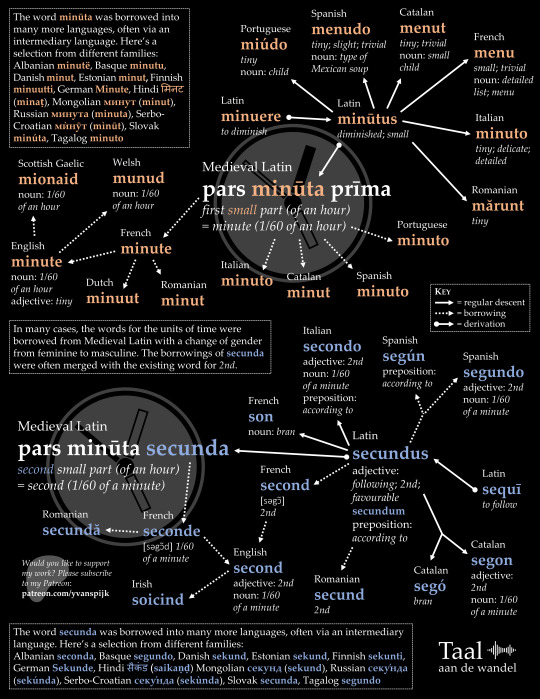
Why is 1/60 of a minute called a second, just like the ordinal number that goes with two? It's because a second is the second subdivision of an hour, a minute being the first. The word minute in turn simply comes from the Latin word for 'small (part)'. See the infographic for more information.
132 notes
·
View notes
Text
Words you didn’t know are related: gold, yellow, cholera, arsenic, yolk, and more!
The Proto-Indo-European language (the hypothesized original ancestor language of most modern languages in Europe and South Asia, hereafter abbreviated “PIE”) had a root *ǵʰelh₃- ‘yellow, green’.
Aside: How can this word refer to both ‘yellow’ and ‘green’? Historically, color terms in the world’s languages referred to a broader range of colors than they do today, and focused more on the texture…
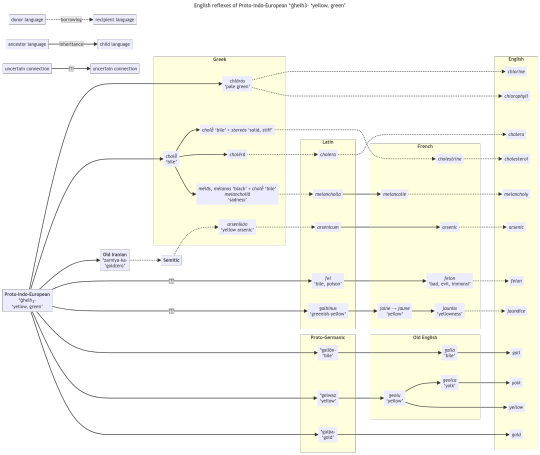
View On WordPress
#English#etymology#French#Greek#historical linguistics#historical reconstruction#Indo-European#Iranian#Latin#Latvian#Old English#Proto-Indo-European#Russian#Semitic#Slavic
46 notes
·
View notes
Text
Why I hate conlangs
A conlang (constructed language) is one that was consciously created for some purpose—usually either fiction or global communication—rather than one that developed naturally (Crystal 2008; Wikipedia). Some well-known examples include:
Dothraki, Valyrian (Game of Thrones)
Esperanto
Na’vi (Avatar)
Quenya, Sindarin (Lord of the Rings)
Klingon (Star Trek)
Atlantean (Atlantis: The Lost…

View On WordPress
#American Sign Language#Atlantean#Cantonese#conlangs#Cree#Dothraki#endangered languages#Esperanto#Kikuyu#Klingon#language revitalization#Na&039;vi#Navajo#Nuuchahnulth#Ojibwe#Quechua#Quenya#Sindarin#Star Wars#Valyrian
50 notes
·
View notes
Text
The many senses of run
How do you define the word run? You probably think of something like ‘fast pedestrian motion’, but what about the use of run in these examples?
There are three boats that run from the mainland to the Island
On my way to the elevator, I ran into Pete
the bench, which numerous times rebuked the Attorney General for letting his witnesses run on
The tears ran down my face
Colors on the towels…

View On WordPress
#cognitive linguistics#corpus linguistics#historical linguistics#language change#prototype theory#prototypes#semantic maps#semantics
12 notes
·
View notes
Text
shrinkage
It’s winter here in Chicago, which means it’s time to talk about shrinkage (the word, that is).
The -age suffix at the end of shrinkage is a common suffix for making new nouns, where the noun denotes something belonging to or functionally related to the stem:
bondage
cleavage
luggage
marriage
orphanage
percentage
signage
voltage
wreckage
The suffix comes from the Latin -āticum with the…

View On WordPress
12 notes
·
View notes
Text
budgie smugglers
In Australia speedos are often jokingly referred to as budgie smugglers because the bulge from the male genitals looks like someone is trying to smuggle a budgie (a small, colorful, Australian parrot—full name “Budgerigar”) in their briefs! 🩲🦜
On a related note, I’ll be running in the fierce Chicago winter in nothing but a budgie smuggler this Saturday as part of the Santa Speedo Run to support…

View On WordPress
14 notes
·
View notes
Text
turkey
Why is it called a turkey if the bird is from North America, not the country of Turkey?
Well it turns out it is from Turkey—sort of. Guinea fowl from Madagascar were imported into Europe through the Ottoman Empire, so most Europeans called the bird a Turkey bird, and later just turkey.
When Europeans encountered turkeys in North America, they classified them as a type of guinea fowl, and used…

View On WordPress
21 notes
·
View notes
Text
azure
During classical antiquity the semi-precious stone lapis lazuli was mined in a place called Lāžvard around modern Afghanistan. That’s also the name of the stone in Classical Persian (لاجورد). It comes from the Proto-Indo-European root *ǵʰelh₃- ‘to gleam, to shine’ + Proto-Iranian *varta- ‘stone’.
Other words that come from *ǵʰelh₃- include gold, yellow, felon, glow, and cholera!
Medieval Greek…
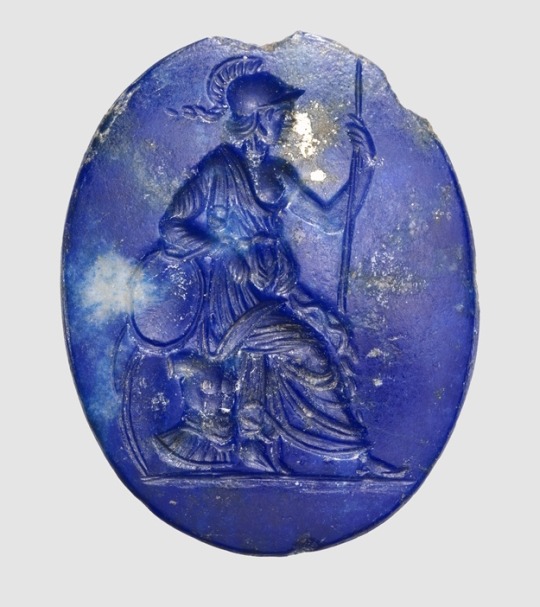
View On WordPress
30 notes
·
View notes
Text

The French word for a werewolf is loup-garou. Etymologically, this compound is pleonastic: garou means 'werewolf' and loup means 'wolf'. It's also hybrid: loup stems from Latin lupus whereas garou was borrowed from West Germanic *werwulf. Click the image for more.
989 notes
·
View notes
Text
How many languages are there anyway?
It turns out it’s really difficult to determine what counts as a language vs. a dialect!
Some would say there are as many dialects as there are people, since no two people speak exactly the same language. We each speak our own “idiolect.”
Unfortunately, even though new languages are appearing all the time, the number of language families is getting smaller with time. Linguistic diversity is on the decline 😢
Further Reading: When languages die: The extinction of the world’s languages and the erosion of human knowledge
90 notes
·
View notes
Text
Catalogue of Endangered Languages
EndangeredLanguages.com is a worldwide collaboration to catalogue the world’s endangered languages:

Don’t miss their incredible (and saddening) map of endangered languages!
Further Reading
Words of wonder: Endangered languages and what they have to tell us
57 notes
·
View notes
Text
The unequal proportion between the number of languages and how many speakers those languages have
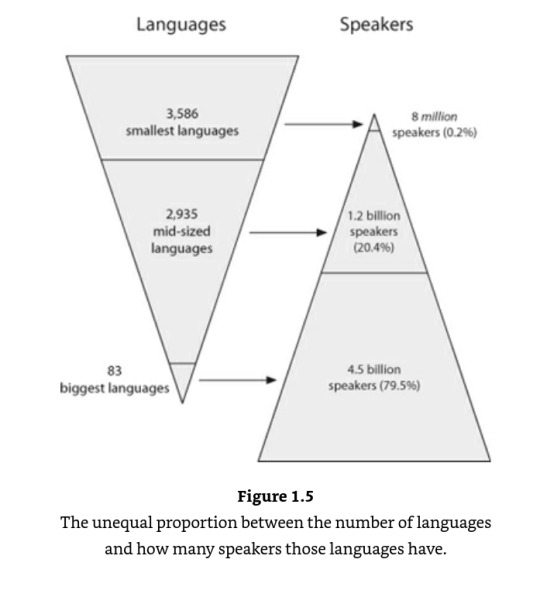
The median number of speakers for a human language is only about 5,000 people.
From the incredibly good book, When languages die: The extinction of the world’s languages and the erosion of human knowledge.
684 notes
·
View notes
Text
Map of British English dialects
by Ryan Starkey (Starkey Comics)
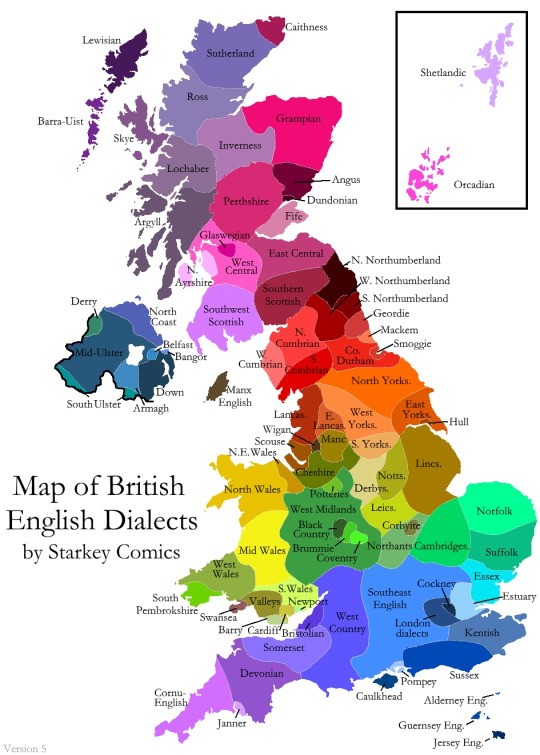
Author Ryan Starkey accompanies the map with a great article:
I’ve spent the last few years pooling together every study, survey, map, and database I can find, and then subjecting my image to several rounds of peer feedback. […] The end result is an image which is, to my knowledge, the most detailed map of British dialects ever made.
He also discusses “Why this map is wrong, and always will be”, and just how difficult it is to create a precise map of dialect regions.
Why is there so much dialect diversity in the U.K.? Because the longer a language is in a region, the more it tends to diversify. This is partly why, for example, there is a much larger variety of dialects spoken in the Eastern U.S. than the Western U.S.
Further Reading
The stories of English (David Crystal)
This is the perfect book to read if you want to know more about the history of dialect diversity in English, because the entire focus of the book is to show that English is not just one unified language (hence the plural “stories” in the title). It’s one of my favorite popular language books.
1K notes
·
View notes
Text
Indigenous vs. European perspectives on etymology: pumpkin
There are two theories about the origin of the word pumpkin, which represent two very different perspectives on history:
All major dictionaries say that the most likely origin for pumpkin is the French word pompion ‘melon’ + the English diminutive suffix -kin ‘little’.
The Wampanoag tribe of Massachusetts says that pumpkin comes from its word pôhpukun ‘pumpkin’, but literally meaning ‘it grows forth round’.

The Plymouth settlers borrowed lots of words from the local Wampanoag people, including moccasin, skunk, squash, and the name of the state, Massachusetts. Tisquantum (who history knows as Squanto) taught them a great deal about local plants and wildlife, so it stands to reason they would have also learned the word pumpkin from him, butchering the pronunciation in the process.
But the way they butchered the pronunciation is important. When English speakers heard the word pôhpukun without realizing it was an Algonquian word, they thought it was actually based on English or French. To them, it sounded like pompion with the -kin suffix added to it. The word pompion (or some similar version of it) appears in English documents in North America prior to the settlement of Plymouth, so it’s likely the Pilgrims were familiar with the word (but probably not strongly so, given that the word was only borrowed into English 80 years prior). As a result, they misanalyzed pôhpukun as pumpkin, thinking it was a combination of the French word pompion and the English suffix -kin.
This kind of misanalysis is called a folk etymology. Other examples are cockroach (< Spanish cucaracha) and woodchuck (< Cree otchek). Folk etymologies happen when speakers analyze a word as having different parts than it actually does.
In this particular case, it seems that the folk etymology is the one that made it into the dictionary, rather than the original Native American one.
#pumpkin#etymology#linguistics#language#Indigenous#Native#Native American#Native American Heritage Month#Thanksgiving#lingblr#langblr
295 notes
·
View notes
Text
The Linguistics Starter Pack
Curious about linguistics but not sure where you can learn more? The Linguistics Starter Pack is for you! This is a curated list of my top recommendations for getting started in linguistics. Most of the items on this list are popular science books, aimed at a general audience, and written in a non-technical way. I’ve also included a few highly accessible introductory textbooks if you’re looking for something more structured instead.
Note: The links on this page are Amazon affiliate links, which means I get a small commission from any book you buy through these links (at no additional cost to you).

Language myths (Bauer & Trudgill, 1998)
If there’s one book on this list you should read to introduce yourself to linguistics, it’s this one. Consisting of short, bite-sized chapters each focused on a different myth, this book dispels some of the most common misconceptions about language and linguistics. The book is almost a quarter-century old, but remains one of the best places to start learning about linguistics.

The 5-minute linguist: Bite-sized essays on language and languages (3e) (Myrick & Wolfram, 2019)
A collection of tiny essays answering some of the most common questions about language and linguistics. This book is a more up-to-date take on Language myths (see above), except the style is more FAQ than myth-busting. This third edition is sponsored by the Linguistic Society of America because of the great impact that the first two editions had on educating the broader public about linguistics.

How languages work: An introduction to language and linguistics (2e) (Genetti, 2018)
Hands down the best introductory linguistics textbook on the market. Extremely easy to read, and covers a variety of topics not typically included in other introductory linguistics textbooks. It also includes a number of language profiles, illustrating the rich diversity of languages in the world. The chapters are written mostly by the linguistics faculty at the University of California, Santa Barbara, one of the top linguistics departments in the world. Proceeds from the book help fund fieldwork with endangered languages.

Through the language glass: Why the world looks different in other languages (Deutscher, 2010)
How does language influence the way we think and see the world? This book is a brilliant journey into the relationship between language and thought, covering everything from how color terms shape our perception of those colors to how grammatical gender shapes the way we categorize people and things in a surprisingly captivating writing style.

The language myth: Why language is not an instinct (Evans, 2014)
A long-overdue introduction to language and the mind for a general audience, this book explains how humans bring to bear a huge array of cognitive skills to make language possible, debunking the idea that language is an instinct and that we all possess a Universal Grammar. Written by the foremost scholar on cognitive linguistics, this book is perhaps one of the most important popular science books published this century. Think of this book like a non-technical introduction to cognitive linguistics.

When languages die: The extinction of the world’s languages and the erosion of human knowledge (Harrison, 2007)
This book showcases the incredible diversity of ways that Indigenous languages work, and highlights just how much of this diversity and indigenous knowledge is being lost as more and more languages stop being spoken. The book covers topics like Indigenous ways of telling time, spatial orientation, and number systems, while serving as a poignant introduction to linguistic diversity and language endangerment.
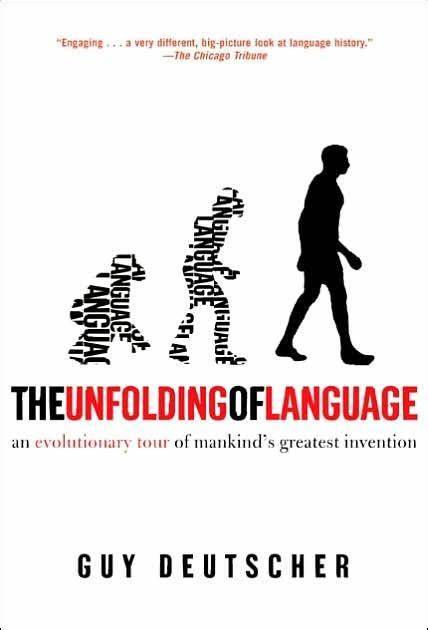
The unfolding of language: An evolutionary tour of mankind’s greatest invention (Deutscher, 2006)
An enthralling introduction to how languages change over time, and how languages develop their incredible grammatical complexity, evolving from rudimentary utterances like “man throw spear” to the beautifully intricate Turkish sehirlilestiremediklerimizdensiniz ‘you are one of those whom we couldn’t turn into a town dweller’. This is the second book on this list by author Guy Deutscher (see Through the language glass, above), and for good reason, because his writing style makes his books impossible to put down. Think of this book like a non-technical introduction to historical linguistics.

Empires of the word: A language history of the world (Ostler, 2011)
A history of the world told not by tracing the development of civilizations and empires, but by following the growth of the world’s major languages. Ostler weaves together a fascinating narrative that gives a fresh perspective on history. This book is a must-read for any history buff.

The dawn of language: Axes, lies, midwifery and how we came to talk (Johansson, 2021)
Weaves together the latest research in archaeology, anthropology, neurology, and linguistics to tell the story of how language evolved.

Language files: Materials for an introduction to language and linguistics (13e) (Ohio State University Department of Linguistics)
Want to get your hands dirty with some actual problem sets in linguistics? This is the book for you. Half textbook, half workbook, Language files is one of the most widely-adopted textbooks for introductory linguistics courses, packed with problem sets illustrating each concept in the book.
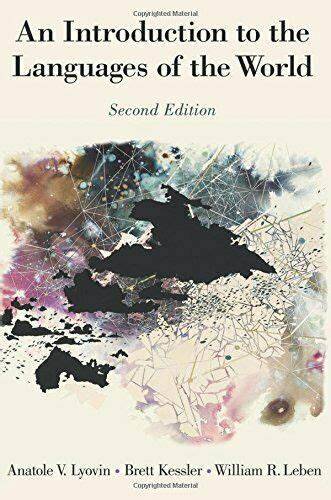
An introduction to the languages of the world (2e) (Lyovin, Kessler, & Leben, 2017)
If you’re interested in learning about specific languages and language families, this is the book for you. It introduces the field of linguistics by taking you on a tour of the world’s languages. This is one of the most unique textbooks in linguistics, and a lot of fun to read.

An introduction to linguistic typology (Velupillai, 2012)
A survey of the incredibly diverse ways that languages work. This is the most technical / advanced book on the list, but is the ultimate guide to the grammars of the world’s languages. This is a great reference to keep on hand when reading other books and articles about linguistics.
513 notes
·
View notes
Text
little maps 🗺️
The Latin word mappa meant ‘napkin, cloth’, but because maps were originally drawn on cloth, this eventually led to the word map 🗺️ as well.

Later, the /m/ in mappa changed to an /n/, giving rise the words nappy (a cloth) and napkin (a little cloth, with the diminutive -kin suffix, which also appears in the word lambkin ‘little lamb’ and possibly pumpkin ‘little melon’).
Old French also added a diminutive to this word, creating naperon ‘little cloth’, but English speakers reanalyzed the phrase a naperon as an aperon instead, and that gave rise to the modern word apron!
@mapsontheweb
96 notes
·
View notes
Text
Back in 2015 Taylor Swift got criticized for using they as an indefinite singular pronoun with somebody as its antecedent (THE HORROR 😱), despite the fact that this has been grammatical in English for 500 years.
Talk about a slow news day 🙄
24 notes
·
View notes